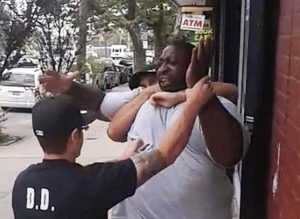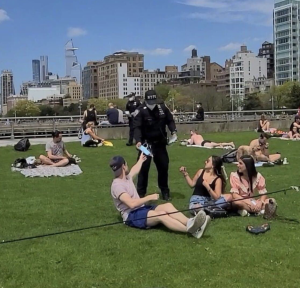For the past couple of months, we’ve been seeing news reports and ads that tell us: “We’re all in this together” and “We’re strong” and “We’ll never forget our heroes”. Most of the reports and ads carry a subtle message—an assumption that there was a “we” to start with—only waiting for the call to join together. But that assumption is at least a flawed one. If there was such a “we”, it’s likely that we would not have ben putting up with a lot of the pre-existing misery that the virus crisis has made visible in stomach-turning ways.
Conditions in nursing homes in this country have been horrifying for many decades but the miseries have been conveniently ignored—other than by the people whose parents and grandparents have suffered. Every once in a while, an expose in the media brings out the shame of the nursing homes but attention soon moves on to other things. Maybe we even assume that, after the bad publicity, things must have gotten better. Well, the reports from the last two months about the ever-growing human carnage in nursing homes, accompanied by astonishing reports of patient neglect and staff and equipment shortages, have closed down that wishful thinking. What the Italian poet Dante wrote about hell, “Abandon all hope you who enter here!” seems to be just about right when it comes to nursing homes in America.
Another case of more or less perpetual degradation and suffering is now on more or less full display in jails and prisons across the country. As recent posts in Hard Crackers from inside have documented, those institutions function as just this side of torture chambers. See https://hardcrackers.com/angola-prisoners-say-war/, https://hardcrackers.com/stickup-on-rikers/and https://hardcrackers.com/wouldnt-able-deal-outbreak-view-inside-arizona-womens-prison/. It’s fair to say that the virus is not the problem in the prisons; it’s the prisons in the prisons that are the problem.
Similarly, for decades, the actions of police officers have been terrifying for many black and poor people but the upsurge of anti-police activity after the murder of Michael Brown in Ferguson, Missouri (in 2014), spurred hopes that things would change for the better. But not much has. Most of what goes on between cops and individuals remains unknown; even when we hear of instances of brutality, we see very little of the actual actions. Individual victims can complain but, far more often than not, what the cops say is what really happened. Every so often, something breaks down the barrier between reality and what we’re told. That was the case in the murder of Eric Garner on Staten Island in 2014. A bystander filmed what happened when the police took custody of Mr. Garner and decided that they would so whatever they wanted to bring him down. Up to the point of murdering him.

Eric Garner, moments before he died from the chokehold he was held in, in spite of gasping for breath and pleading “I can’t breathe.”
And it’s now true again in the case of a berserk cop on New York City’s Lower East Side supposedly enforcing the city’s social distancing laws. What we have is a cop, acting on behalf of the city’s liberal mayor’s orders to enforce a beneficial public health measure, going off on a bystander and trying to beat him up as much as possible in a few seconds, presumably stopping just short of the limits of being able to claim that he was acting in self-defense.
(Video recording of the violent arrest)
What happened is almost a textbook example of what cops do everyday when they’re confident that no one who counts is looking—unprovoked violence, shouts, threats, curses, warnings, and lots of backup from other cops. Where do all the other cops come from? Don’t they have jobs to do other than to protect each other?
It might be a good idea for all who look at the video to break it down moment by moment so that we can fully appreciate what it’s like to be at the receiving end of such an event. The understanding of someone else’s suffering doesn’t come packaged in generalities; instead it comes by reliving the experience moment by moment.
The worst stuff that happens to people is usually hidden away—inside jails and prisons, nursing homes, facilities for the disabled, meat-packing plants, other factories and housing projects. This virus crisis has shoved reality into our faces if we’re willing to look for it. But even those who are inclined to be oblivious may be noticing something different.

What’s going on in New York is not a stupid comic strip. Cops all over the city are giving people warnings about being too close to each other or not wearing masks. And they just started forcing homeless people off the subways when they are being shut down for cleaning at 1:00 AM. What they’re doing may well contribute to the overall public health. As is almost always the case, the cops are clumsy when they’re dealing with things that they don’t understand. The training of police officers doesn’t especially emphasize understanding. Even when it does, everyday cop behavior wears it down. My best guess is that most cops don’t really understand what they’re supposed to do.
In many neighborhoods, what they’re doing is perceived as annoying and intrusive but not violent. Nonetheless, more New Yorkers are experiencing a police presence in ways they never have before and some of them are calling it Orwellian. They are stunned by a small hint of what for many is an everyday reality, which remains mostly unchanged by the pandemic.

